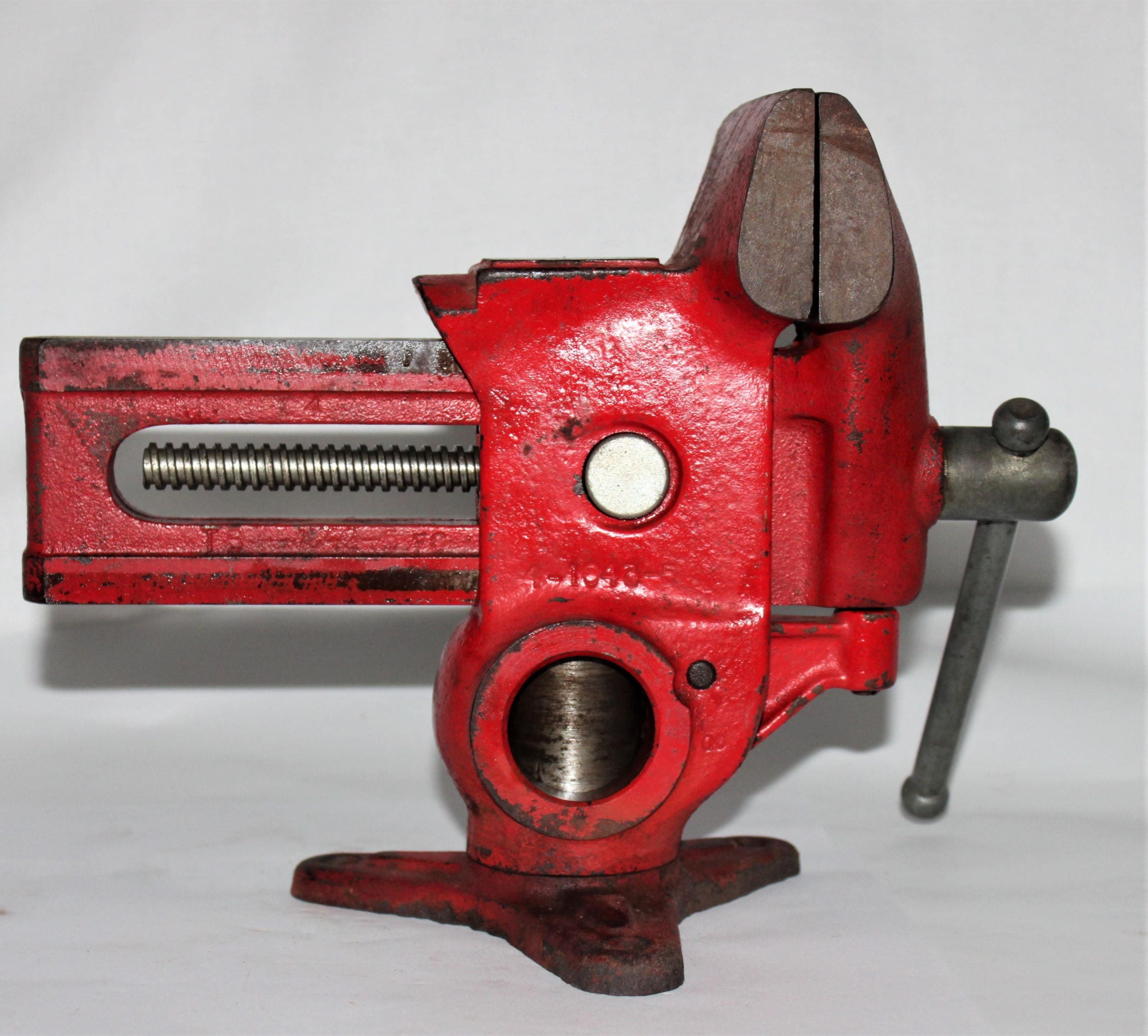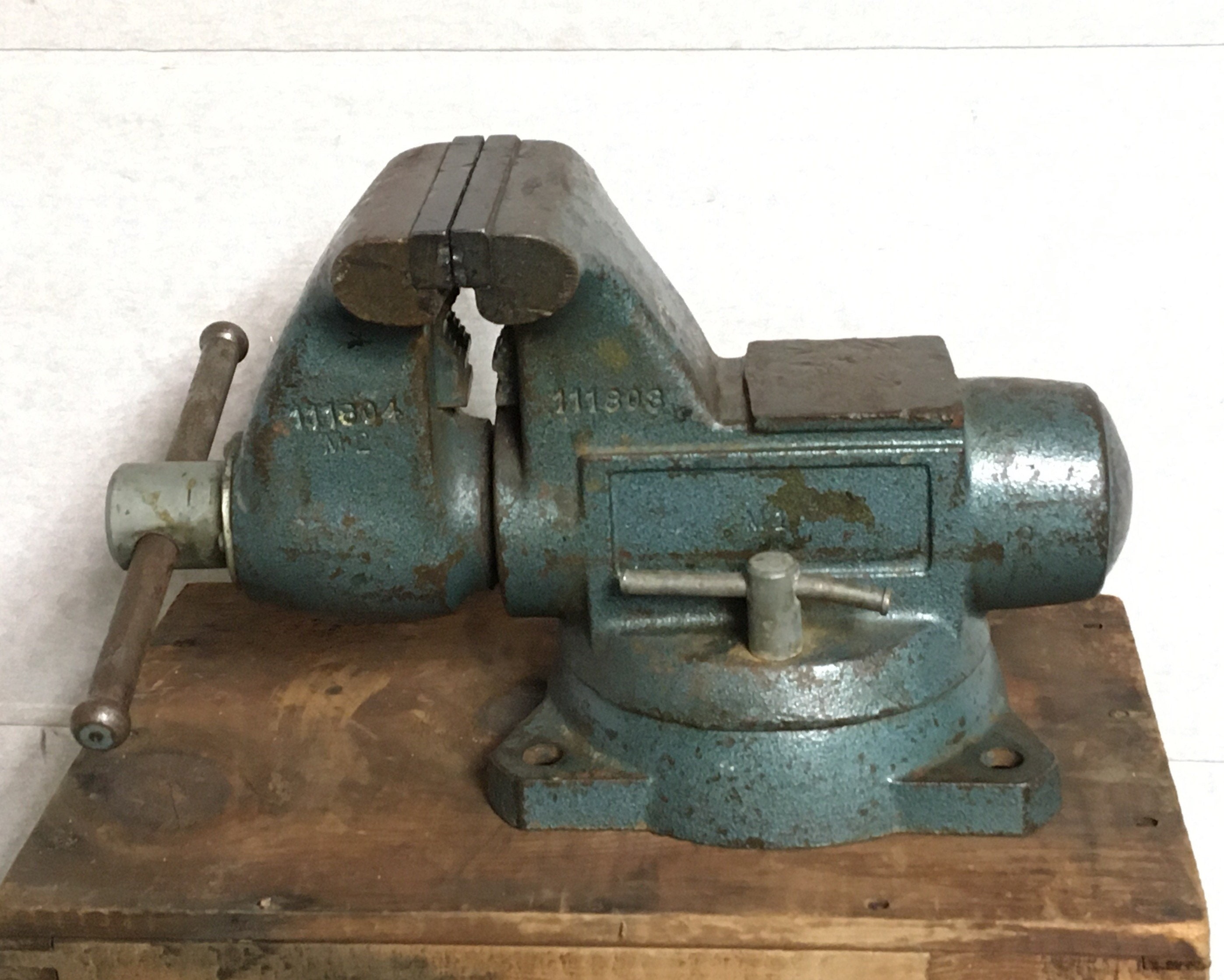
- Make sure the vise is clamped down securely before you start using it.
- Always use caution when tightening or loosening the vise, as it can be easy to strip the threads.
- If you’re using the vise for clamping, make sure the workpiece is well-supported so it doesn’t fall over.
- Experiment with different techniques and see what works best for you.
- Have fun and be creative!
What's the best vise on the market?
Best Bench Vise: Reviews
- Yost LV-4 Home Vise. Yost is one of the most popular brands out there if you are looking for a bench vise. ...
- Yost Tools Bench Vise Tool. As mentioned earlier, Yost makes a lot of bench vise models. ...
- HFS Heavy Duty Bench Vise. ...
- IRWIN Tools Multi-Purpose Bench Vise. ...
- TEKTON 4-Inch Swivel Bench Vise. ...
- Grizzly Industrial G7062-5" Multi-Purpose Bench Vise. ...
What are the different types of woodworking vice?
Types of Woodworking Vises
- Plain Screw Vise. Usually made from cast iron, these vises are finely machined for a high level of precision. ...
- Quick-Release Vise. A quick-release vise does exactly what its name suggests. ...
- Woodcraft Vise. ...
- Pattern Maker’s Vise. ...
- Face Workbench Vise (or Front Vise)
- Leg Workbench Vise. ...
- Engineer’s Vise. ...
What is a woodworking vice used for?
What is a wood vise used for? A woodwork vice can be used for either light or heavy-duty work as it can hold both large or small pieces of wood. Due to its clamping capabilities, it is often used by professional woodworkers and in manufacturing industries for the production of wood products, such as plywood, veneers, containers, flooring, etc.
How to mount a woodworking vice?
Mounting a Wood Vise
- Select which Side. Choose which side of your workbench you will mount your work vise. ...
- Position the Wood Vice. Place the Wood Vice where you want it before bolting. ...
- Measuring. Mark out the holes where it requires bolting. ...
- Drilling. Then, drill the holes to allow the bolts to pass through your workbench. ...
- Bolting. ...
- Installing. ...

How do you use a woodworkers vice?
Using your viceStep 2 – Open vice jaws. Turn the handle anti-clockwise to open the vice jaws. ... Step 3 – Place workpiece. Place the workpiece in-between the jaws. ... Step 4 – Close vice jaws. Close the jaws by rotating the handle in a clockwise direction. ... Step 5 – Avoid racking.
Where do you position a woodworking vice?
For general purpose work the front edge is probably the best option. Check that the vice doe not interfere with the bench's legs or aprons. Remember to take into account that the vice will have wooden jaw liners (described later) that stick out past the edge of the vice.
What kind of wood do you use in a wood vise?
Generally, maple is used for wood vise jaws as it is durable enough to withstand the clamping force of a vise. However, softer woods such as pine can be used if your projects will be made from mostly soft hardwoods like cherry to prevent marring.
What is the purpose of having a vise on a workbench?
A bench vise is an essential and integral tool used in metalworking, woodworking, and some other manufacturing applications. It is mounted on workbenches and its main function is to hold the workpiece safely and securely.
Do I need a vise on my workbench?
A workbench is only a success if it can keep itself still and provide means to hold your work. A woodworking vice is not an essential feature of this. Typically though we can expect to see two vices on a workbench today. One will be installed on the front of the bench, towards the left.
Is a tail vise necessary?
The main reason why a traditional tail vise is so darn useful is because of the unobstructed gap you get in the front of your bench. this gives you the perfect way to solidly clamp chair legs, or any long part that needs to be held while you work on it from one end.
What size vise do I need for woodworking?
For general household DIY, a 4- to 5-inch vise is large enough to handle most tasks. (This measurement is the length of the jaws from end to end and is maximum amount of contact your vise has with the workpiece.)
What is the best woodworkers vice?
5 Best Woodworking Vises (2021 Review)Yost M9WW Rapid Acting 9” Woodworking Vise.TEKTON 53986 6 ½” Woodworking Vise.Eclipse Quick Release 10” Woodworking Vise.IRWIN 226361 6 ½” Woodworking Vise.Shop Fox D4328 9” Quick Release Wood Vise.
What do you line vise with?
You can use plywood, a good grade, or solid wood, even pine, if that's what you have, to line the jaws of your vise.
When not in use a bench vise should be left with?
46. Bench vises not in use should be left loose with the handle in a vertical orientation. This will prevent injury to those walking past the workbench.
How do you put a vice on a workbench?
0:006:41Installing a Woodworking Vise - YouTubeYouTubeStart of suggested clipEnd of suggested clipHi everyone and welcome to Bob's wood stuff today I'm going through the process of installing aMoreHi everyone and welcome to Bob's wood stuff today I'm going through the process of installing a woodworking vise on my workbench let's go to the shop. This is my workbench it has two vices already but
What clamping position should be considered when mounting a vise on a workbench?
What clamping position should be considered when mounting a vise on a workbench? The vise should be positioned so that a long piece can be held vertically in the jaws without interference from the workbench.
How do you mount a vise toolbox?
1:113:26How to mount a bench vise to a Husky tool box - YouTubeYouTubeStart of suggested clipEnd of suggested clipWhat I did is I just hello marker marked down so now I'm gonna drill a couple holes three holes toMoreWhat I did is I just hello marker marked down so now I'm gonna drill a couple holes three holes to be exact. And I'm gonna go all the way through the wood to the top toolbox.
How do you install a record woodworking vice?
1:033:41Installing a Record 52½ Quick Release Vise, when DISASTER ...YouTubeStart of suggested clipEnd of suggested clipWhich will go we set into the front of the bench. I'm gonna laminate these to thinner pieces to makeMoreWhich will go we set into the front of the bench. I'm gonna laminate these to thinner pieces to make the front jaw that wants to be thicker because the ends are going to overhang.
How to fix a rod on a nut?
To fix the rod, we added a small hole through the T-piece and the rod and insert a small bolt. Now you can turn the rod by turning the T-piece.
Is maple wood good for a work bench?
very nice. The only problem I have is you should have used hardwoods for maximum durability. Some maple would not have been too costly. Over time you will find these things matter in a work bench. It really gets beat up and a soft wood will not endure as much abuse.
Do you need clearance for horizontal movement?
Well you need some clearance for the horizontal movement due to the slop of the thread. When move the jaw you’ll see that it’s slightly misaligned to the other. But that clearance is very small and is easily achieved by the holes where the pipes go into. I used the copper pipes because they were scrap material from an old project and were laying around in my shop. I guess you could easily use different kind of pipes, hollow or solid, of different materials. Take what suites you is the cheapest.
Does a threaded rod work?
The threaded rod works fine, but the slope of the thread is very low. So you need a lot of turns to open the vise. Maybe I would use a higher slope next time. But this is just a convenience thing
What is bench vise?
Think of a bench vise as a tool that’s as essential to your success as a hand plane, router, or tablesaw. Although clamps might substitute in some situations, they tend to get in the way, and a vise gives you freedom to do almost any type of work.
Why is a shoulder vise used?
Because the outer jaw has a tongue that slides in a groove on the fixed arm, it has enough play to let you clamp uneven-shaped workpieces. A shoulder vise gives you floor-to-ceiling clamping space between its jaws. A threaded bushing mortised into the vise shoulder (unseen) keeps the screw on track. Things to know:
What is a pivoting jaw vise?
The benchtop’s edge or apron typically serves as the inner jaw. A pivoting-jaw vise holds irregular-shape stock without racking the jaws. You also can remove the pivoting jaw for parallel-jaw clamping. Magnet-lined wood jaw pads stay in place without screws. A cast-iron-jaw vise can be recessed into the bottom of a bench for maximum strength ...
How much does a metal vise cost?
Metalworking vises usually mount to the top of a bench. Woodworking vises vary in price from about $30 to as much as $400. Generally, once you decide on a particular style of vise, the more you spend, the better the quality and effectiveness of that vise. Now let’s take a look at the most common types of vises for woodworking.
Where do front vises mount?
Front vises. As the name implies, these mount to the front (long edge) of the bench, typically on a left-hand corner. Left-handed folks usually prefer a front vise mounted on the right corner.
What is a tail vise?
A traditional tail vise [ Photos H and I] consists of a rectangular or L-shape block of wood (the jaw) fastened to a steel or cast-iron fixture that slides back and forth in a cutaway corner of the bench.
